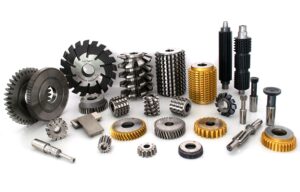
5 Things To Look Out for When Buying a Used Boat
When purchasing something secondhand, there is a greater danger than when purchasing something new. This is especially true when shopping for motorised vehicles, such as a car, motorbike, ATV, or boat. In fact, this is doubly true for boats, as there are so many essential but unseen systems, compartments, and accessories. And the things you can’t see cause the biggest problems, which is why surveys are required for significant purchases.
In many instances, however, the boat’s size and price do not warrant a professional’s time. If this is the case, the next time you consider purchasing a used boat in Singapore, be careful to inspect for the following typical problems.
Engine Issues
Purchasing a yacht with a defective engine is a recipe for catastrophe. Therefore, remove the dipstick and inspect the oil to ensure it is not milky (which indicates water in the oil). Verify that the spark plugs are not encrusted in carbon. Listen to how smooth the running sound is. Arrive 15 minutes early for the sea testing so the vendor does not warm up the vessel beforehand. However, if you don’t know anything about engines, bring a friend who does, or even better, get a technician.
Electric Circuits
Few tasks are more complex than upgrading the wiring on a yacht, which frequently runs beneath decks, through narrow chases, and into locked compartments. When inspecting a secondhand boat, switch on every electrical component, from the lights to the electronics, one by one. Then turn them all on simultaneously. Additionally, inspect the fuse box. Examine the general condition of the wire; is it straight, well-organised, and supported? Or are you staring at a rat’s nest of cables that will make future troubleshooting impossible?
Failing Pumps
Bilge pumps are our greatest concern here. You may be able to flip a switch and ensure operation, but that does not indicate that the float switch is functional. To be sure, access the bilge and activate it manually. Washdowns, heads, and anything else driven by a pump should also be tested.
Rot
In reality, rot is not nearly as prevalent as it was, mainly because most builders ceased using untreated wood as a building material decades ago. However, it is still occasionally observed, especially when observing relatively older vessels. This often occurs in the transom or deck coring. Numerous major fractures around the borders of the transom (a few minor ones are nearly always present) are a sure sign of structural failure. A spongy or bouncy sensation underfoot on the deck indicates rot has occurred.
Stringers
The stringers are the boat’s skeleton; if they break or detach from the hull, significant problems may ensue. You may have to squeeze through a small hatch or duck into a stinky bilge to get a good look at the stringers with the assistance of a bright flashlight. Any damage or separation that can be seen should be handled extremely carefully.

